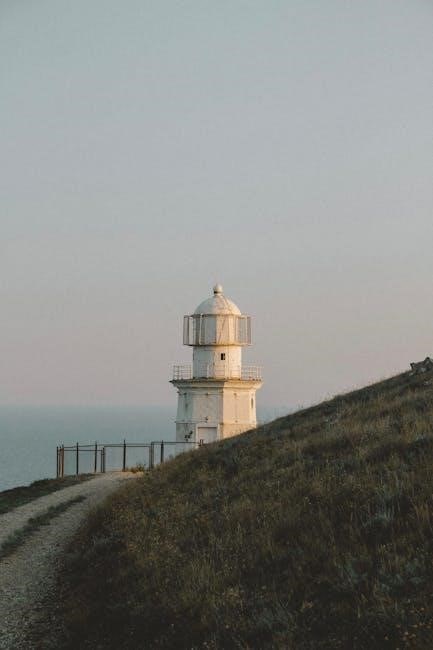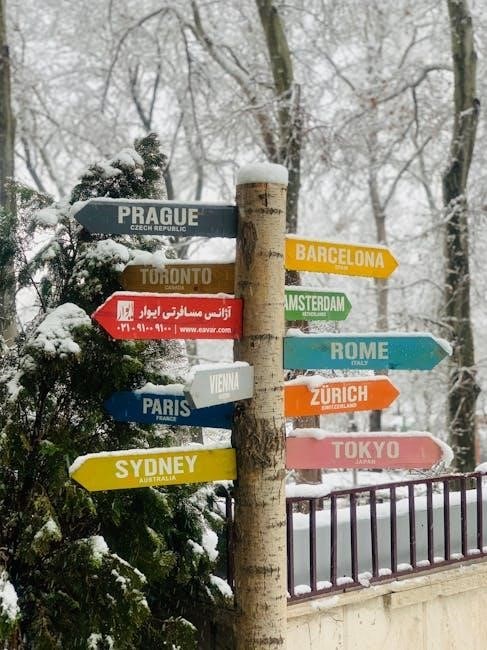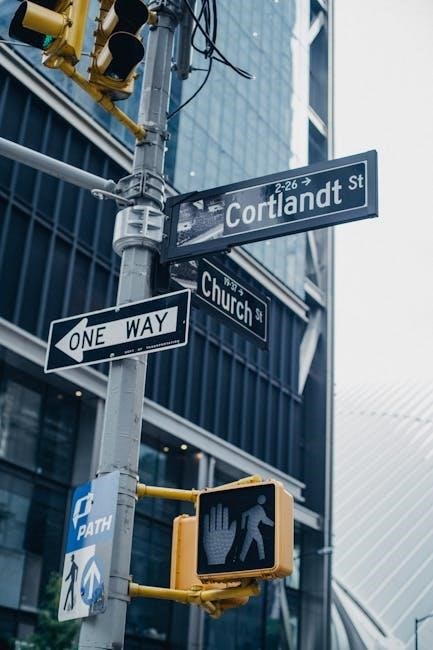A Canadian visa invitation letter is a crucial document supporting visa applications, detailing the host’s and invitee’s information to facilitate the visa process and verify visit intentions.
1.1 Importance of the Invitation Letter in Visa Applications
The invitation letter is crucial for Canadian visa applications, as it provides detailed information about the host and invitee, verifying the purpose and duration of the visit. It assures immigration authorities of the host’s financial responsibility and the legitimacy of the visit. A well-structured letter demonstrates compliance with visa requirements, increasing the likelihood of approval. It is often required to confirm the invitee’s intent to return home after their stay, ensuring a smooth visa process.
1.2 Overview of the Canadian Visa Process
The Canadian visa process involves submitting an application, providing required documents, and attending an interview if necessary. The invitation letter plays a key role, as it supports the applicant’s case by detailing the host’s financial responsibility and the visit’s purpose. Applicants must demonstrate intent to return home after their stay. The process ensures compliance with immigration rules and verifies the legitimacy of the visit, making the invitation letter a vital component for a successful application.
Purpose and Structure of the Invitation Letter
A Canadian visa invitation letter serves to formally invite and sponsor a visitor, detailing their stay’s purpose, duration, and host’s responsibilities. It must be clear, concise, and signed.
2.1 What is a Letter of Invitation for Canadian Visa?
A Letter of Invitation for a Canadian visa is a formal document written by a Canadian resident to invite a foreign national for a temporary visit. It must include the host’s contact details, the visitor’s personal information, and the purpose and duration of the visit. The letter is submitted with the visa application to demonstrate the authenticity of the visit and the host’s financial responsibility. It is not legally binding but holds significant weight in the application process.
2.2 Key Elements to Include in the Letter
The letter must include the host’s full name, address, phone number, and immigration status in Canada. It should detail the invitee’s personal information, such as name, birthdate, and passport number. The purpose and duration of the visit, along with arrival and departure dates, must be clearly stated. Financial support details, accommodation arrangements, and a declaration of the host’s responsibility are also essential. The tone should remain formal and factual.

Who Can Write the Invitation Letter?
A Canadian citizen or permanent resident can write the invitation letter, provided they are 18+ and can financially support the invitee during their stay.
3.1 Eligibility Criteria for the Host
The host must be a Canadian citizen or permanent resident, at least 18 years old, and legally residing in Canada. They must demonstrate financial stability to support the invitee during their stay. The host must also have sufficient living space to accommodate the visitor. Additionally, the host should not have any criminal offenses or legal issues that could impact their credibility. The host’s eligibility is verified through documentation, such as proof of income, employment, and residency.
3.2 Required Documents from the Host
The host must provide proof of Canadian citizenship or permanent residency, such as a passport or PR card. They must also submit proof of income, like bank statements or an employment letter, and proof of accommodation, such as a property deed or rental agreement. Additionally, the host may need to provide tax returns or other financial documents to demonstrate their ability to support the invitee. These documents verify the host’s credibility and financial stability.
Information to Be Included in the Letter
Include personal details of both host and invitee, contact information, and accommodation arrangements. Specify the host’s status in Canada, the invitee’s relationship, and intent to support.
4.1 Personal Details of the Host
The letter must include the host’s full name, permanent address in Canada, and contact information. Specify their status in Canada (e.g., citizen, permanent resident). Include the host’s passport number if applicable. Clearly state the host’s relationship to the invitee. The host must be at least 18 years old and have legal residency in Canada. Ensure all details are accurate and match the host’s identification documents to avoid discrepancies.
- Full name and address in Canada.
- Contact details (phone number and email).
- Status in Canada (citizen or permanent resident).
- Passport number (if applicable).
- Relationship to the invitee.
This information ensures the letter is official and credible.
4;2 Personal Details of the Invitee
The invitation letter must include the invitee’s full name, date of birth, passport number, and nationality. Specify their complete home address and contact information. Clearly state the invitee’s relationship to the host. Include details about their marital status and occupation, if applicable. Ensure all information matches the invitee’s passport and other identification documents. Accuracy is crucial to avoid delays or complications in the visa process.
- Full name and date of birth.
- Passport number and nationality.
- Complete home address.
- Contact information (email and phone number).
- Relationship to the host.
This ensures the letter is valid and credible.
4.3 Purpose and Duration of the Visit
The invitation letter must clearly state the purpose of the visit, such as tourism, visiting family, or business. Specify the exact duration of the stay, including arrival and departure dates. The host must confirm their commitment to supporting the invitee during their stay. This ensures the letter aligns with the visa application and demonstrates the invitee’s intention to return home after the visit ends.
- Purpose of the visit (e.g., tourism, family, or business).
- Exact travel dates (arrival and departure).
- Host’s commitment to support the invitee.
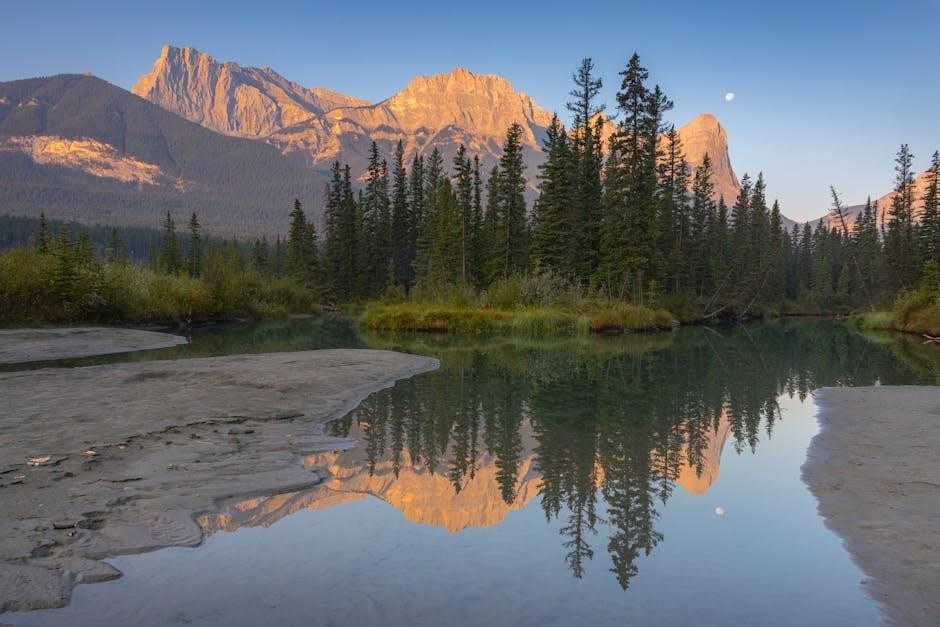
Clarity in this section is essential for a successful application.
Format and Tone of the Letter
The letter should be formal and polite, avoiding slang or jargon. Use proper structure with clear headings, bullet points, and professional fonts to ensure readability and professionalism.
5.1 Official vs. Casual Tone
The tone of the invitation letter should be formal and polite, reflecting respect for the visa process. While a casual tone may feel natural, it risks appearing unprofessional. A formal tone ensures clarity and adherence to legal standards, crucial for a successful application. Use respectful and polite language within a structured format to convey sincerity and professionalism, balancing warmth with the necessary formalities required by immigration authorities.
5.2 How to Structure the Letter
To ensure clarity, the invitation letter should follow a structured format. Begin with your contact information and the date, followed by the recipient’s address. Open with a polite salutation and clearly state the purpose of the visit. Include details about the invitee’s stay, such as accommodation arrangements and the duration of the visit. Conclude with a sincere closing and your signature; This organized approach helps immigration officers quickly assess the legitimacy of the invitation, improving the chances of approval.

Examples and Templates
This section provides sample invitation letters for different purposes, such as family visits or business trips. Downloadable PDF templates are also available for easy customization.
6.1 Sample Invitation Letter for Family Visit
A sample invitation letter for a family visit should include the host’s and invitee’s personal details, the purpose of the visit, and the duration of stay. It must state the relationship between the host and invitee, confirm accommodation arrangements, and guarantee financial support if applicable. The tone should be formal, and the letter must comply with Canadian visa requirements. Below is a template structure for reference:
Host’s Name

Address in Canada
City, Province, Postal Code
Email Address
Phone Number
Date
To Whom It May Concern,
I, [Host’s Name], hereby invite my [relative/friend], [Invitee’s Name], to visit me in Canada from [start date] to [end date]. I will provide accommodation and financial support during their stay. Please consider this letter as part of their visa application.
Sincerely,
[Host’s Name]
This template can be customized to fit specific needs. Ensure all details are accurate and the letter is signed. For a downloadable PDF, visit [official website link].
6.2 Sample Invitation Letter for Friends
A sample invitation letter for friends visiting Canada should include the host’s legal status, the invitee’s details, and the visit’s purpose. The letter must confirm the friendship duration, accommodation arrangements, and financial support if provided. It should be formal, concise, and signed. Below is a template:
Host’s Name
Address in Canada
City, Province, Postal Code
Email Address
Phone Number
Date
To Whom It May Concern,

I, [Host’s Name], invite my friend, [Invitee’s Name], to visit me in Canada from [start date] to [end date]. I confirm our friendship of [length of relationship] and will provide accommodation and financial support during their stay.
Sincerely,
[Host’s Name]
This letter should be customized and included in the visa application. For a downloadable PDF template, visit [official website link].
6.3 Downloadable PDF Templates
Downloadable PDF templates for a Canadian visa invitation letter are widely available online. These templates provide a structured format, ensuring all necessary details are included. They typically cover host and invitee information, visit purpose, accommodation details, and financial support. Templates are customizable and save time. Ensure the chosen template is from a trusted source, such as official immigration websites or reputable legal services. Always verify the template’s accuracy to meet visa requirements.
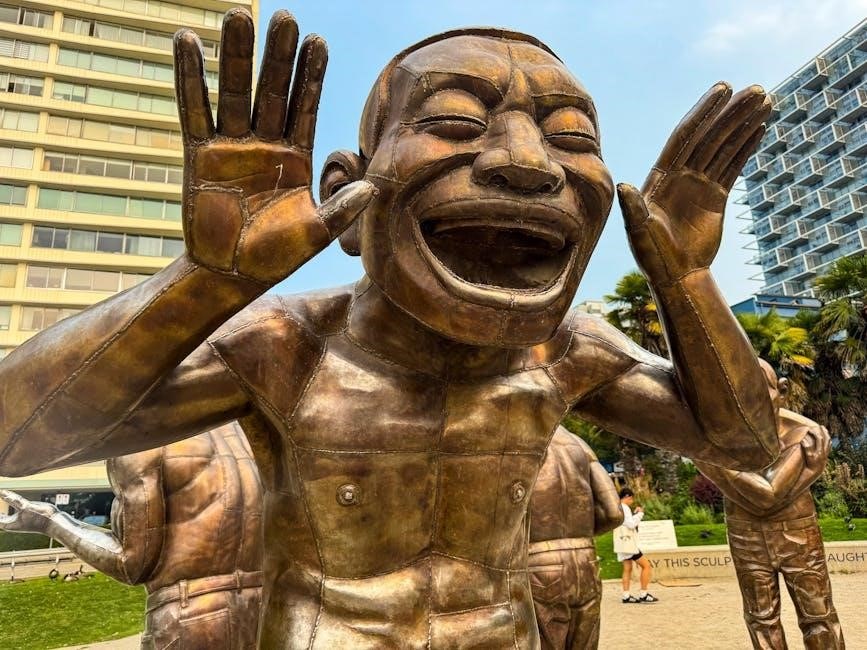
Legal and Compliance Considerations
The invitation letter must comply with Canadian immigration laws and regulations. It should be truthful, accurate, and meet all legal requirements to ensure the visa application’s approval.
7.1 Legal Requirements for the Letter
The invitation letter for a Canadian visa must meet specific legal requirements to be valid. It should be notarized if required, written by an eligible host, and include accurate details about both the host and invitee. The letter must state the purpose and duration of the visit, along with the host’s commitment to financial support. It should also comply with Canadian immigration laws, ensuring truthfulness and adherence to all regulatory standards. Proper documentation from the host is essential.
7.2 Avoiding Common Mistakes
To ensure the invitation letter is accepted, avoid common mistakes such as providing inaccurate personal details or omitting the purpose of the visit. The letter must clearly state the invitee’s duration of stay and the host’s legal status in Canada. Avoid handwritten letters unless necessary, and ensure the host signs the document. Inaccurate or incomplete information can lead to delays or rejection of the visa application. Always double-check the details before submission.

Submitting the Letter
The completed invitation letter must be sent to the invitee either via email or post. Ensure to keep a copy for your records. Include the letter in the visa application, along with other required documents, to support the invitee’s case. Submitting the letter correctly ensures the application is processed efficiently by Canadian immigration authorities.
8.1 How to Send the Letter to the Invitee
To send the invitation letter, you can email it to the invitee or mail a hard copy. Ensure the letter is clear and legible. Scan or photocopy the signed letter before sending. Provide the invitee with the original or a certified true copy if required. Keep a copy for your records. The letter must be included in the visa application to support the invitation. Ensure all details are accurate to avoid delays in processing.
8.2 Including the Letter in the Visa Application
The invitation letter must be included in the visa application as supporting documentation. Ensure the letter is original, signed, and dated. If submitting electronically, upload a scanned copy in the required format. For paper applications, attach the original or a certified true copy. Place the letter in the section for supporting documents, ensuring it is easily identifiable. Accuracy and completeness are crucial to avoid delays or rejection of the application.
Frequently Asked Questions
Find answers to common questions about the Canadian visa invitation letter, addressing concerns and clarifying requirements to ensure a smooth application process.
9.1 Can the Letter be Handwritten?
A handwritten invitation letter is generally acceptable, but it must be clear, legible, and include all required details. Typed letters are often preferred for professionalism and readability. Ensure the handwriting is neat to avoid any issues during the visa review process. All information must be accurate and complete, regardless of the format chosen.
9.2 Do I Need to Notarize the Letter?
Notarizing the invitation letter is not mandatory but can add credibility. While Immigration, Refugees and Citizenship Canada (IRCC) does not require notarization, having a notary public stamp may strengthen the document’s authenticity. It is essential to check specific requirements, as some visa officers might prefer notarized letters. However, a well-structured, signed letter with all necessary details is typically sufficient for the application process.
9.3 Can I Write the Letter in French?
The invitation letter can be written in French, as Canada recognizes both English and French as official languages. However, it is important to ensure clarity and completeness. While French is acceptable, including an English translation may facilitate the visa processing. Always verify the requirements with the Canadian immigration authorities or consult their official resources for the most accurate guidance.

The invitation letter is a crucial document for Canadian visa applications, ensuring clarity and professionalism. Always maintain accuracy and honesty to facilitate a smooth visa process.
10.1 Final Tips for Writing an Effective Letter
Ensure the invitation letter is clear, concise, and well-structured. Use formal language, avoid errors, and include all required details. Proofread thoroughly and ensure accuracy. Highlight the host’s eligibility and the invitee’s purpose of visit. Use proper formatting and maintain professionalism throughout. These tips will help create a compelling and effective invitation letter for a successful Canadian visa application.
10.2 Importance of Accuracy and Honesty
Accuracy and honesty are crucial when writing a Canadian visa invitation letter. Any false or misleading information can lead to visa rejection or legal consequences. Ensure all details, such as the host’s status and the invitee’s intentions, are truthful and verifiable; Avoid exaggerations and provide clear, factual information. This builds trust with immigration officers and strengthens the application’s credibility, increasing the chances of approval.
Additional Resources
Explore official Canadian immigration websites for detailed guides and downloadable templates to assist in crafting a proper invitation letter, ensuring compliance and clarity in your application.
11.1 Links to Official Canadian Immigration Websites
Visit the official Immigration, Refugees and Citizenship Canada (IRCC) website for detailed guides on invitation letters. The Canada.ca portal provides downloadable templates and instructions. Ensure compliance by referencing the latest visa requirements and regulations. These resources help applicants prepare accurate and complete documentation, increasing the chances of a successful application. Use these official links to access reliable information and avoid errors in your invitation letter for a Canadian visa application.
11.2 Recommended Templates and Guides
Utilize professional templates and guides to craft a proper Canadian visa invitation letter. The IRCC website offers official templates that outline required sections. Additionally, reputable immigration websites provide downloadable PDF templates tailored for different scenarios, such as family visits or business trips. These resources ensure your letter meets all necessary criteria, improving the likelihood of approval. Use these tools to avoid errors and present a well-structured invitation letter for your visa application;
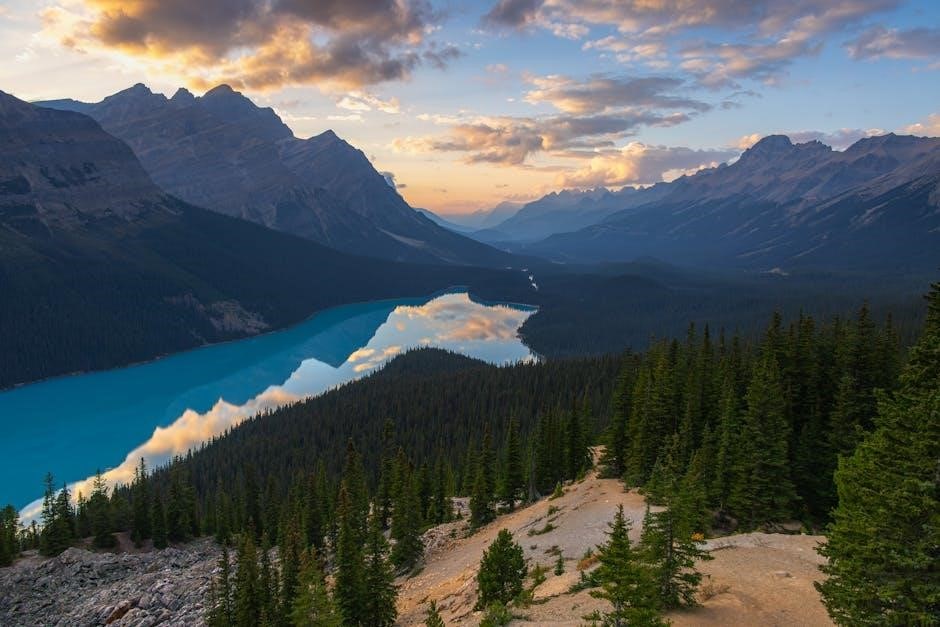
Next Steps After Writing the Letter
After completing the invitation letter, send it to the invitee, include it in their visa application, and monitor the application status through official channels. Prepare for any potential interviews and ensure all documents are ready for submission.
12;1 How to Track the Visa Application
After submitting the visa application, track its progress online through the Immigration, Refugees and Citizenship Canada (IRCC) portal using the provided reference number. Regularly check your email for updates and ensure the invitation letter is readily available. If delays occur, consider contacting the visa office via their web form for further assistance. Tracking helps monitor the application’s status and ensures timely follow-up, keeping the process transparent and efficient for all parties involved.
12.2 Preparing for the Visa Interview
Prepare for the visa interview by reviewing the invitation letter and supporting documents. Understand the purpose of the visit and be ready to explain travel plans and ties to your home country. Practice answering potential questions honestly and confidently. Ensure all documents, including the invitation letter, are organized and easily accessible. Arriving early and maintaining a calm demeanor will help reduce anxiety and present a positive impression during the interview process.



